One afternoon I taught my 9-year-old daughter how to use the apple slicer. It’s not the easiest kitchen tool around, so we worked together to push the apple slicer through the shiny red apple she picked from the fruit bowl. We laughed when a few drops of juice spritzed us in the face, causing us both to take a step back. The scent of the freshly cut apple immediately activated our senses and, by pure instinct, we both inhaled deeply at the exact same time.
“This smells exactly like that cider mill in Connecticut!” Looking up at me wide-eyed with excitement, I could practically see the memory replaying in her mind. “Remember how the big cider machine squashed the apples flat and the cider ran down the tube and it smelled like millions of apples? This is the same exact smell!”
Children learn a lot when they engage their senses. That cider mill trip is burned in my daughter’s memory because it was full of sensory experiences (for sensory experiences you can create at home, click through the slide show, above). Sure, the overwhelming smell of “millions” of apples is hard to forget, but she also studied the texture of apples by holding them and turning them over in her hands. She tasted different kinds of apples. She watched the cider press at work and sampled fresh pressed cider. We estimated how many apples might fit in a barrel and tried a few apple cider donuts (obviously).
Sensory play creates fun and creative learning experiences for kids. By exploring and engaging with materials on their own (without a long lecture about what the materials are supposed to do), children learn important skills like problem solving and creative thinking. Imagine trying to learn how to use an iPhone without ever touching an iPhone? Or learning to play the guitar without ever holding that guitar in your hands? It’s nearly impossible. As adults, we sometimes take sensory learning for granted. It’s just part of what we do. So why would we stick young children in front of worksheets and books and assume that they will learn best with lectures and words on the page?
If we want our kids to thrive in the academic setting, we have to incorporate sensory play. Beyond the classroom, we can start at home. Sensory play is messy and you’ll find remnants of the play weeks after you clean it up, but consider these benefits before you shy away from the mess:
1. Sensory play promotes linguistic skills. When kids are given various materials to play with, they learn the true meaning of new words. Take a word like “squishy”. You know what that means and you can probably even come up with a squishy object without much thought, but it’s difficult to actually describe what that word means to young children. Soft play-doh is squishy. Give a kid some play-doh and they squish is between their hands (and possibly even the couch cushions) to their heart’s delight. Sensory play gives kids the opportunity to use descriptive and expressive language. This not only builds their vocabulary, but it improves their communication skills.
2. It builds cognitive skills. Have you ever dumped a bunch of unrelated objects (acorns, glue, pompoms, and feathers, for example) on the table and said, “I wonder if you can make anything out of these?” You should. The results can be pretty amazing. Kids are often given specific instructions to make some object. That’s great for learning to follow steps, but when left to their own devices, kids come up with some great problem solving strategies. They learn to make decisions, solve problems and think creatively when they are given the opportunity to do so. It can be hard for parents to step back and let their kids create something out of nothing without offering input, but it helps build these important cognitive skills. Also? Don’t forget about the math skills. Sensory play promotes counting, sorting, and comparing — early math skills that will come in handy later on.
3. Sensory play helps foster social skills. A sensory table is a great way to help kids work on early social skills. Sensory play encourages kids to work side-by-side or together with the same materials. When kids do this, they tend to compare strategies and talk about the materials in front of them. They might come up with a plan together or talk about their individual plans. Either way, they work on building connections, developing communications skills, taking turns, expressing themselves, and collaborating with others.
4. It has physical benefits. All kids develop at their own pace, and fine motor skills (coordination of small muscle movements) can lag for some. That’s okay. Sensory play is a great way to help develop those fine motor skills! When my son was in preschool his teacher suggested making a game out of racing across the room holding cotton balls with kitchen tongs. It was great fun and helped him build that hand muscle strength! Mixing, measuring, squeezing, pounding, and manipulating materials all help build fine motor skills.
5. Sensory play increases creativity and creative problem solving. When you step back and let your child explore the materials independently and decide what to play and how to play it, your child taps into creative thought, the imagination and sometimes even make believe (acorns make great aliens, you know.) Creative problem solvers tend to have greater self-confidence and self-esteem because they know that they can handle whatever comes their way. They might fail along the way, but they learn to view those setbacks as learning moments. They become more resilient and learning to keep trying new ideas until one works. These are the kids who thrive in school down the line.
Now get out there and get messy!
More Fun with Kids:
- How to Build the Perfect Snowman + 31 Epic Snowman Designs
- Fun Car Games that Will Entertain Your Kid for Hours
- Incredibly Fun Indoor Games for Kids
Super Cool Sensory Stations You Can DIY
-
Peek-a-Boo Sensory Board
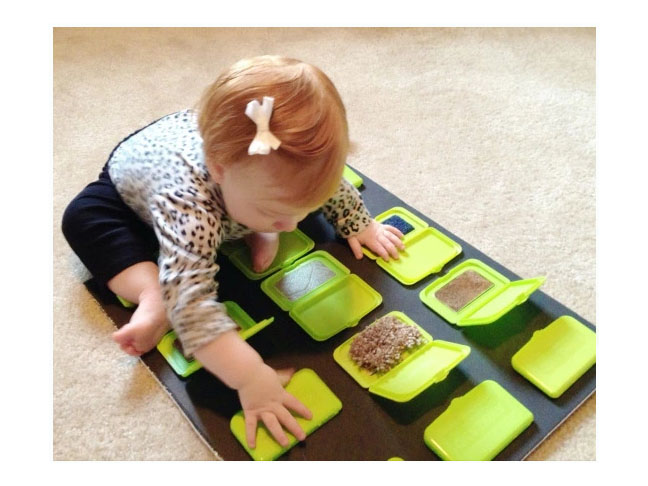
This is an awesome way to reuse all those finished baby wipe containers. By turning them into a peek-a-boo sensory board, you can hide various fun and colorful textures behind each door!
Get the DIY tutorial at Motherhood and Other Adventures.
-
Rainbow Silly Putty
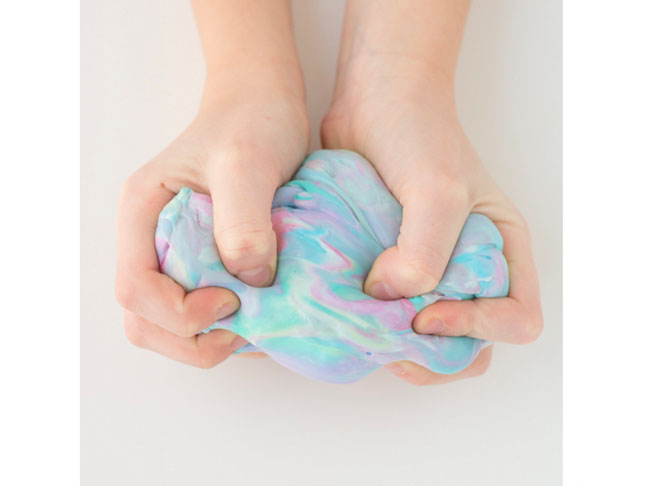
Your kids will love this fun DIY project, and they'll have fun kneading it to alleviate hypersensitivity to textures while simultaneously getting rid of stress.
-
Bubble Wrap Stomp Painting
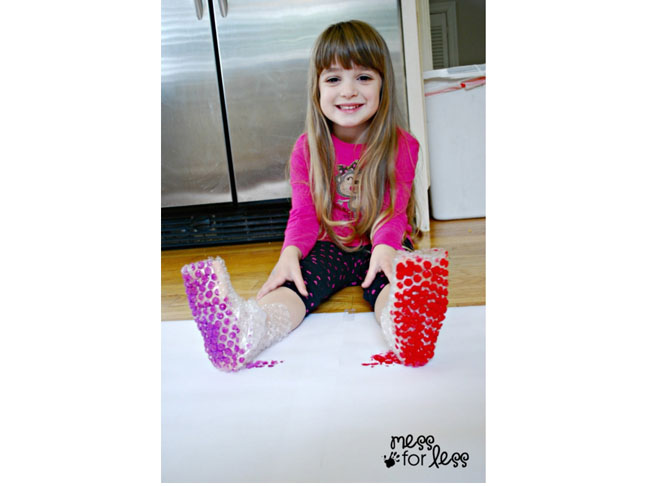
Bubble wrap is great for sensory play -- no matter what -- but kids will have an especially fun time wrapping their little feet in this cushy, plastic material and then creating their own colorful, creative works of art.
Get the DIY tutorial at Mess for Less.
Photo: Mess for Less
-
Water-Bead Sensory Bottles

Water beads and rainbow colors make a great sensory play activity for babies and toddlers. Have them simply explore the bottles at their leisure, or try having toddlers identify colors, or match the colors to other objects in the house.
Get the DIY tutorial at Living Montessori Now.
Photo: Living Montessori Now
-
Sensory Boxes

Babies love to open and close boxes, and with this fun DIY your baby can explore different textures and colors, too.
Get the DIY tutorial at Teaching Mama.
Photo: Teaching Mama
-
Edible Finger Paint
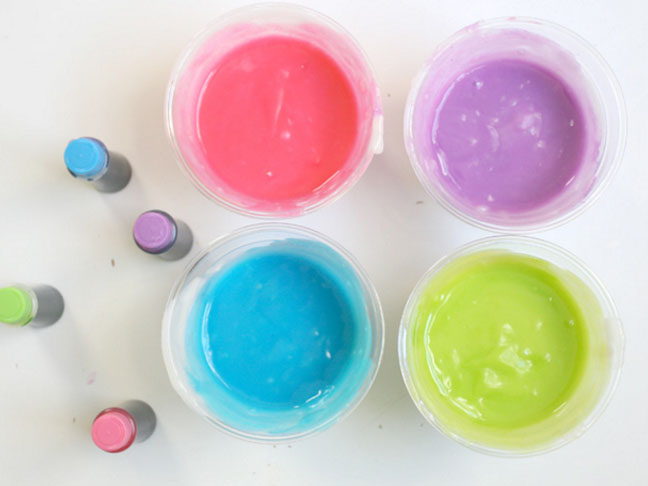
Edible finger paint is like a sensory explosion! It's great fun to make with the kids, and loaded with colors, textures, and flavors that won't harm your kiddo.
-
Insect Sensory Bin

Bugs and beans and butterflies, oh my! Using tweezers to collect bugs is a great challenge for fine motor skills. Kids can make bug cupcakes and bury them in the beans -- the possibilities are endless.
Get the DIY tutorial at Cutting Tiny Bites.
Photo: Cutting Tiny Bites
-
Edible Sensory Balls
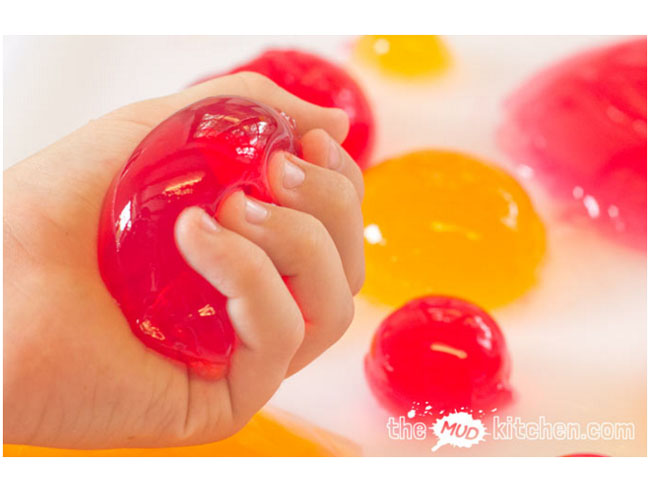
Jello and ice ball moulds make this an incredibly easy DIY project that will stimulate the senses with its sweet smell, slippery texture, and unforgettable taste.
Get the DIY tutorial at The Mud Kitchen.
Photo: The Mud Kitchen
-
Fake Snow
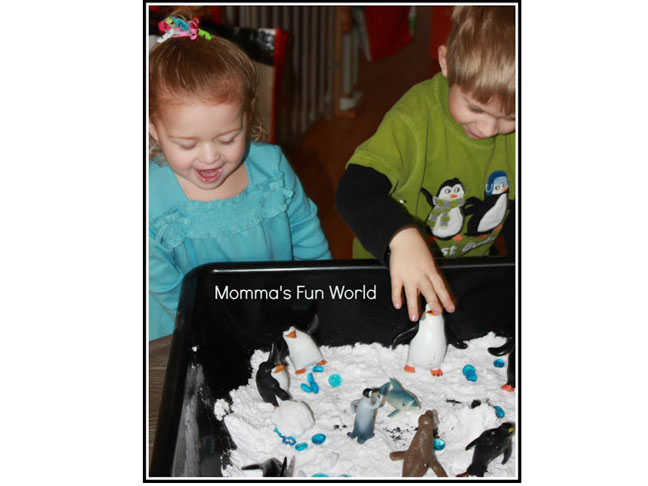
With a bit of hair conditioner and baking soda, you can create a cool-to-the-touch, soft, snowy wonderland in your home and make snowballs without even having to go outside.
Get the DIY tutorial at Momma's Fun World.
Photo: Momma's Fun World
-
Crayon Floam Dough
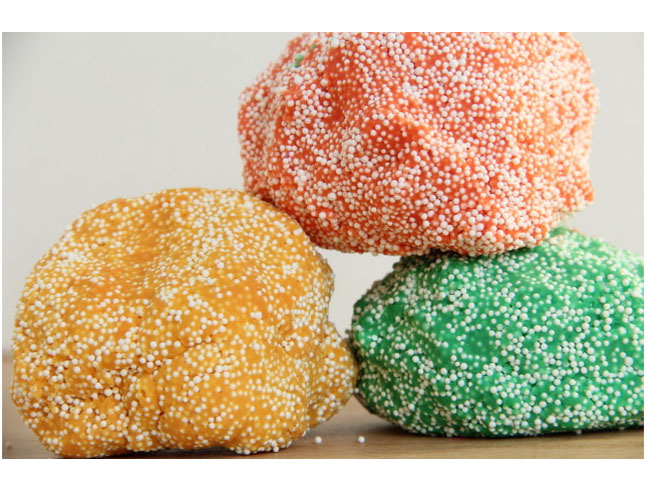
Moldable, colorful, crumbly, and MESSY! A fun recipe mixing dough and styrofoam and crayon play dough that the kids will love.
Get the DIY tutorial at Sugar Aunts.
Photo: Sugar Aunts
-
Foil Painting
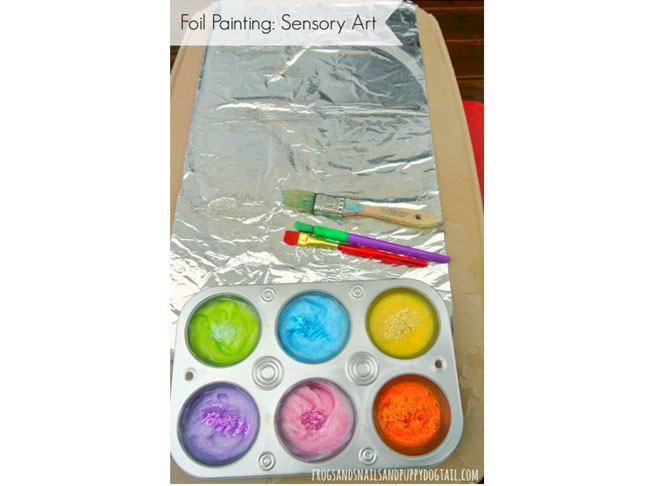
Bright, shiny foil makes a great canvas for this fun and stimulating sensory art project. Use some sensory paints (made with pudding, flour, or sand) and let the kids get creative -- and messy.
Get the DIY tutorial at Frogs Snails and Puppy Dog Tails.
-
Googly Eye Sensory Bag
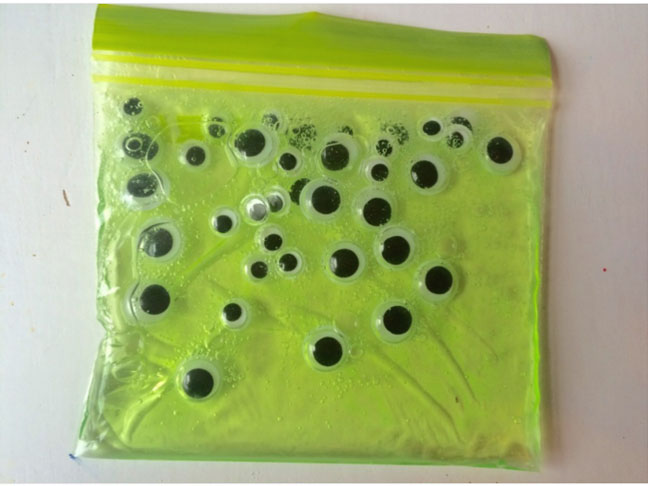
This is a great squishy, eye-filled sensory bag for babies and toddlers -- and it's mess free, quick, and easy.
Get the DIY tutorial at Clare's Little Tots.
Photo: Clare's Little Tots
-
Hot Chocolate Sensory Bin

With the addition of chocolate tea bags, your sensory bin gets the added dimension of scent in this super fun and imaginative game.
Get the DIY tutorial at Play & Learn Every Day.
Photo: Play and Learn Every Day
-
Painting with Balloons
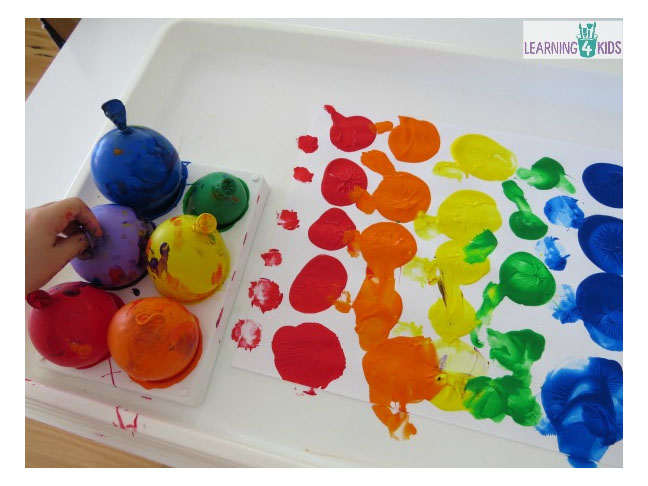
Kids will love the colors and creative freedom they get from painting with balloons, not to mention the sensory benefits of working the balloons in with the paint to produce specific patterns on paper.
Get the DIY tutorial at Learning 4 Kids.
Photo: Learning 4 Kids
-
Balloon '5 Senses' Game

Using a funnel, you can fill different balloons with easy to difficult textures -- from beans, to sugar, to playdough -- and encourage kids to squeeze, shake, smell, and have fun deciphering what's inside.
-
Exploring Circles
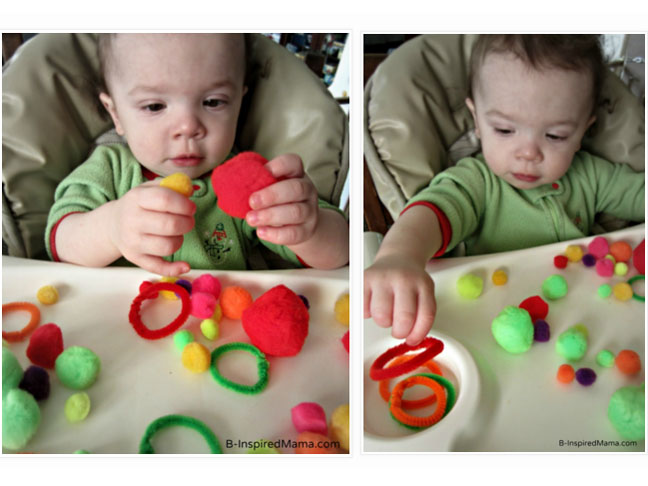
Sensory play doesn't have to be complex or labor intensive. A bag of different sized pompoms can be incredibly stimulating for toddlers as they explore the different textures, colors, and sizes.
Get the DIY tutorial from B-Inspired Mama.
Photo: B-Inspired Mama
-
Butterfly Life Cycle Sensory Bin
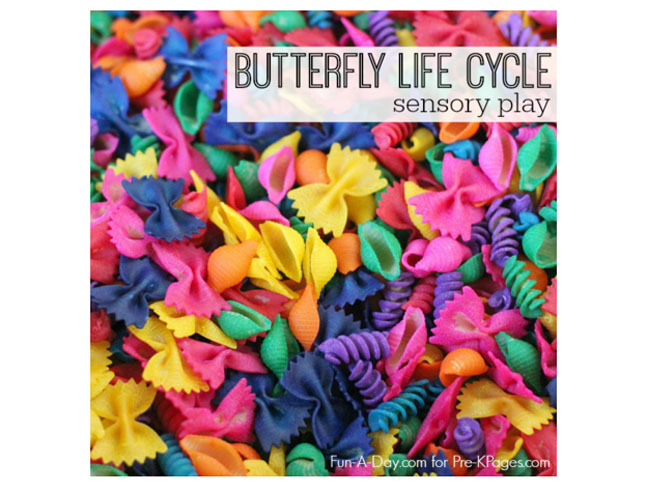
Colorfully dyed pasta shapes become a fun and tactile science lesson, representing the life of the butterfly -- from chrysalis, to caterpillar, to butterfly.
Get the DIY tutorial at Pre-K Pages.
Photo: Pre-K Pages
-
Kaleidoscope Rice
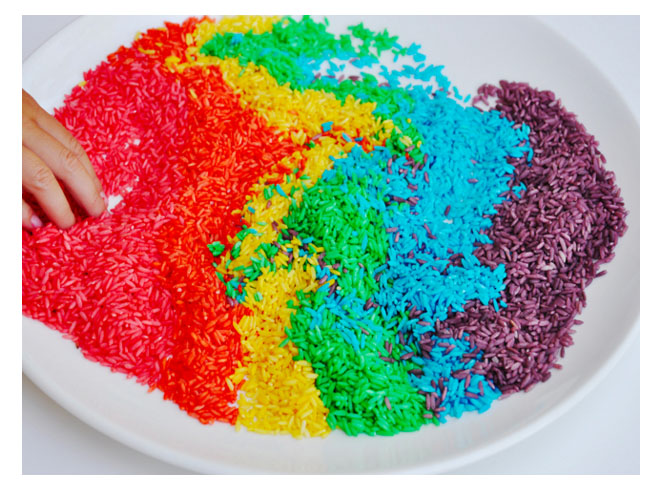
This colorful rainbow rice is visually stimulating, cheap to make, and good for endless amounts of entertainment with your toddler (from filling jars to gluing colorful pictures).
-
Dyed Sand

With a bit of sand and some vegetable dye, kids will marvel as they swirl and mix and make patterns as the sand changes colors. Take the project further by glueing sand to paper after for beautiful works of art.
Get the DIY tutorial from Mummy Musings and Mayhem.
Photo: Mummy Musings and Mayhem
-
AB Seed Sensory Bin

With this sensory bin, kids can learn the alphabet and have some fun sensory play in the process!
Get the DIY tutorial at Growing Book by Book.
Photo: Growing Book by Book
-
Recycled Sensory Bottles
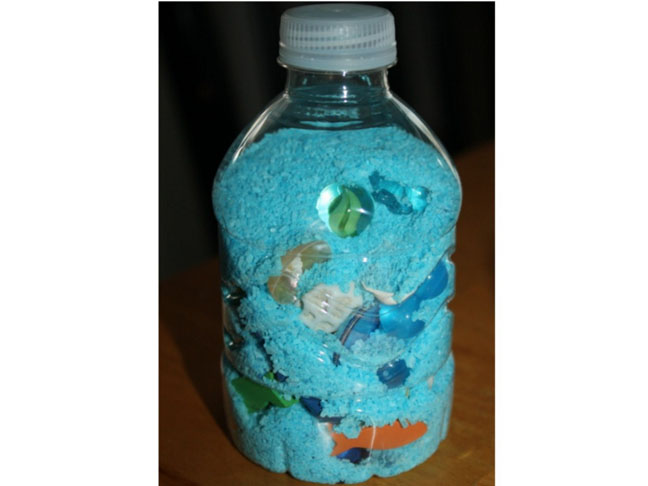
Look around the house and you're sure to find enough material to make and fill a sensory bottle that will dazzle the kids and keep their little eyes and hands occupied for a great quiet time activity.
Get the DIY tutorial at Little Bins for Little Hands.
Photo: Little Bins for Little Hands
-
Kool-Aid or Shaving Cream Handwriting Practice
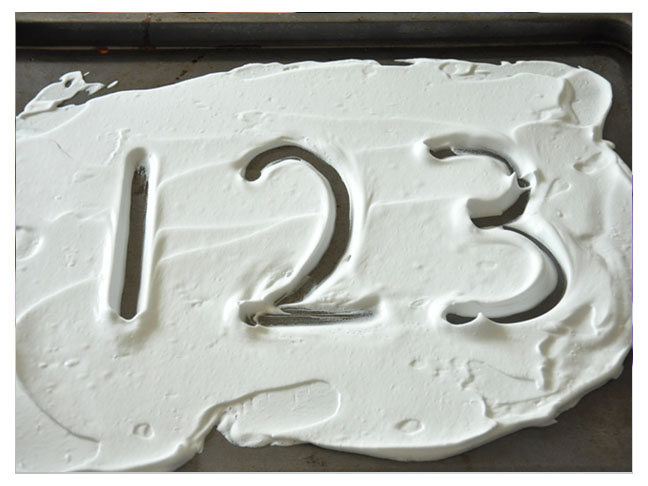
Using materials you've probably already got lying around, you can help your child improve their handwriting (aka fine motor skills) -- and have fun doing it!
-
Fluffy, Squishy Slime
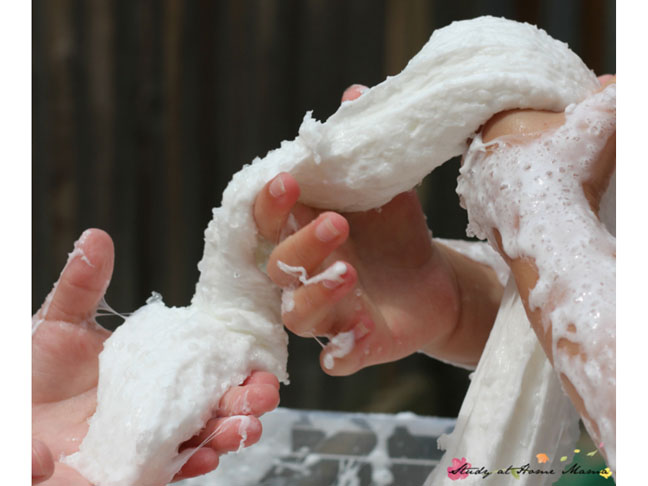
This fluffy, squishy, stretchy slime is great for some tactile sensory play -- and you'll never guess what the secret ingredient is.
Get the DIY tutorial at Sugar Spice and Glitter.
Photo: Sugar Spice and Glitter
-
Ocean Wave Bottles
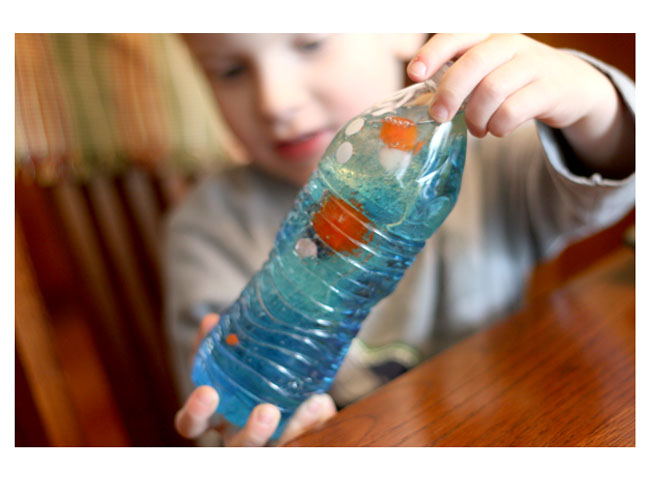
With a few household materials, kids will love making their own "wave" bottles and swishing them back and forth as they explore the contents, sights, and sounds their mini-oceans make.
Get the DIY tutorial at Hands On As We Grow.
Photo: Hands On As We Grow
-
Wiggly Worms & Birds Bin

This sensory bin is full of fun wiggly textures, and kids will get loads of fine motor skill development by sorting colors, "feeding" baby birds, and crunching the nest between their fingers.
Get the DIY tutorial at Modern Preschool.
Photo: Modern Preschool
-
Sensory Kit

On the go? Create a sensory kit (in a backpack, crate, or box) with items from Amazon, Target, and your local hardware store to help stimulate your child and calm him down in overstimulating situations.
Get the DIY tutorial at Lemon Lime Adventures.
Photo: Lemon Lime Adventures.








